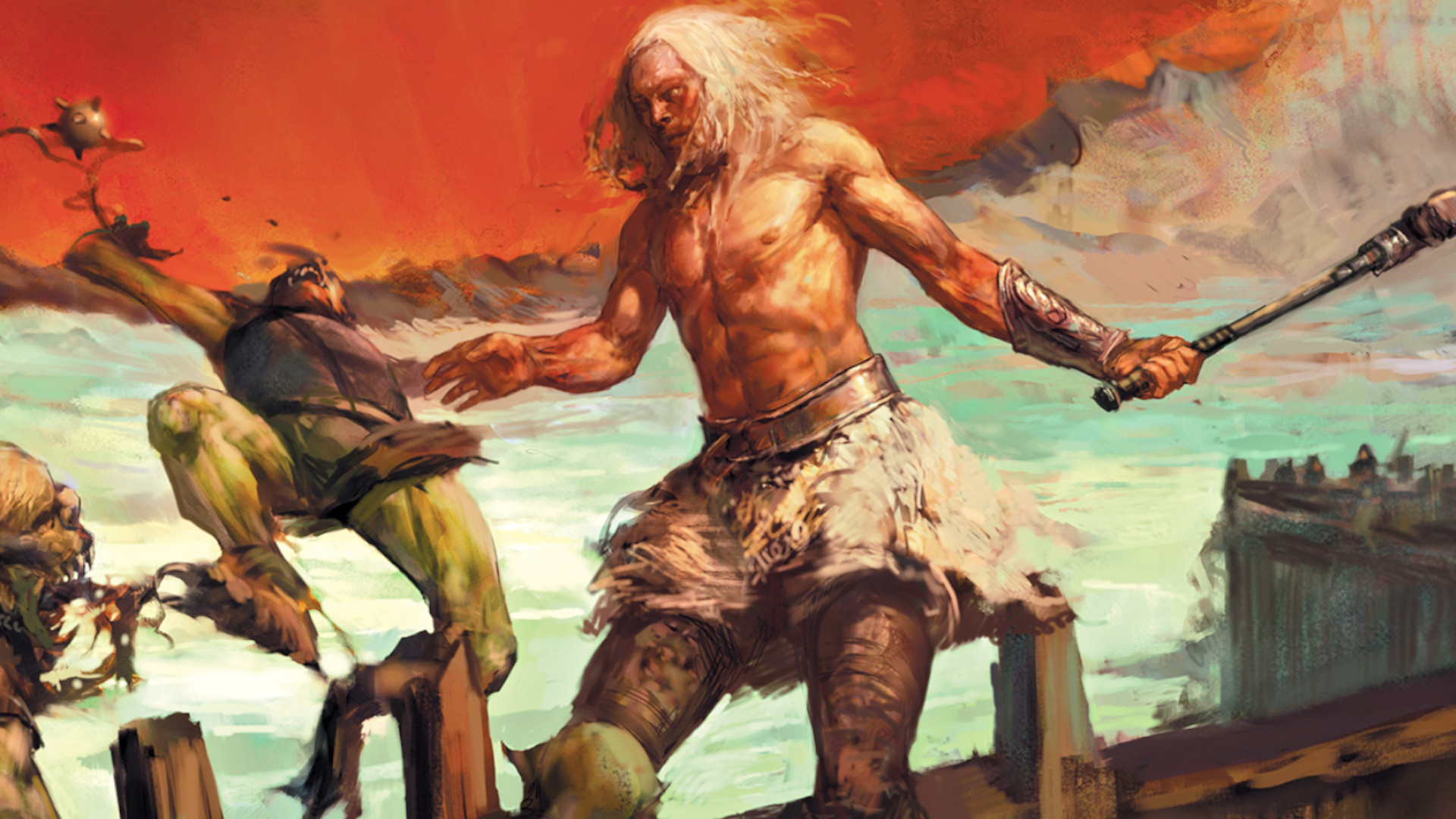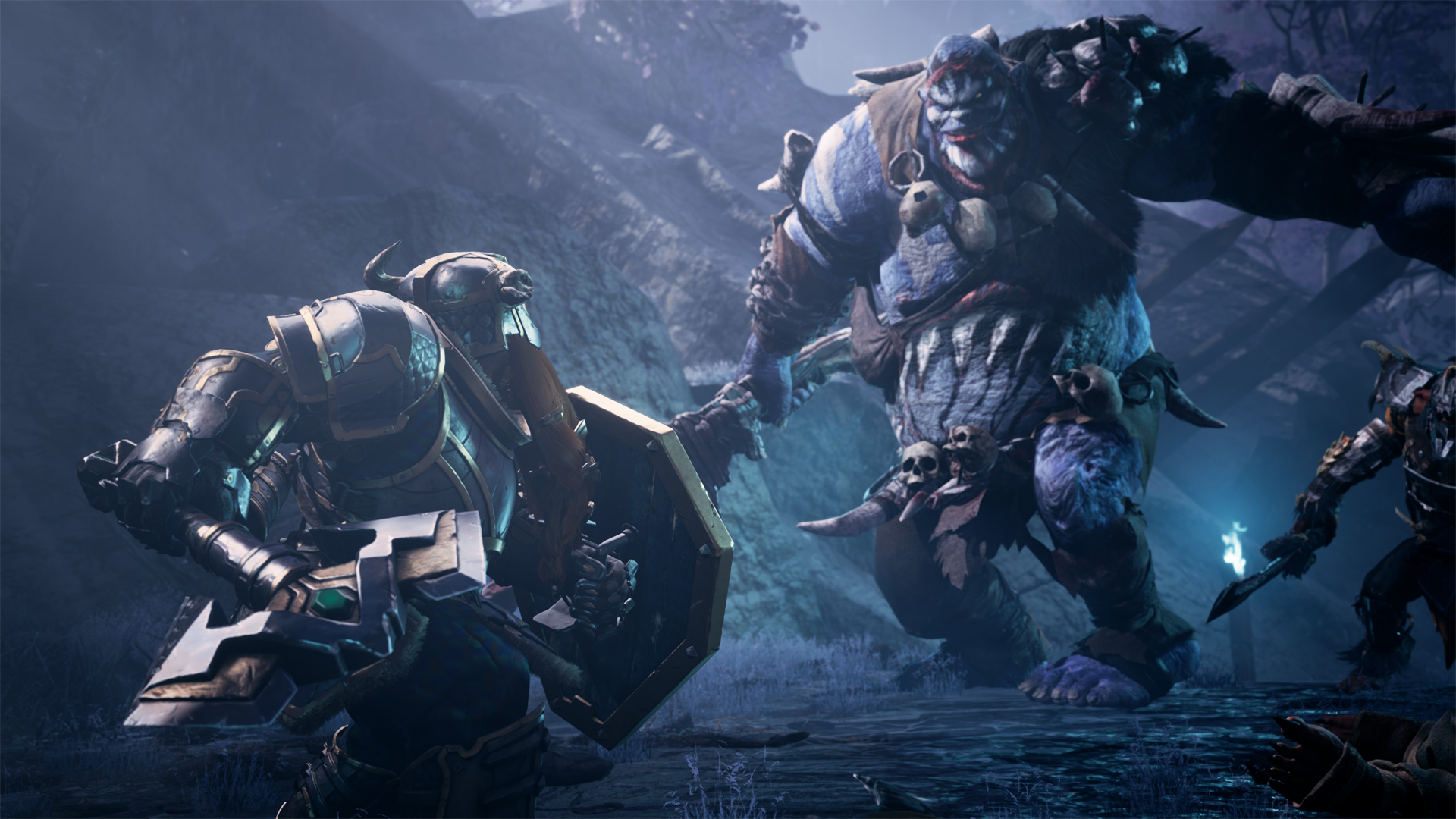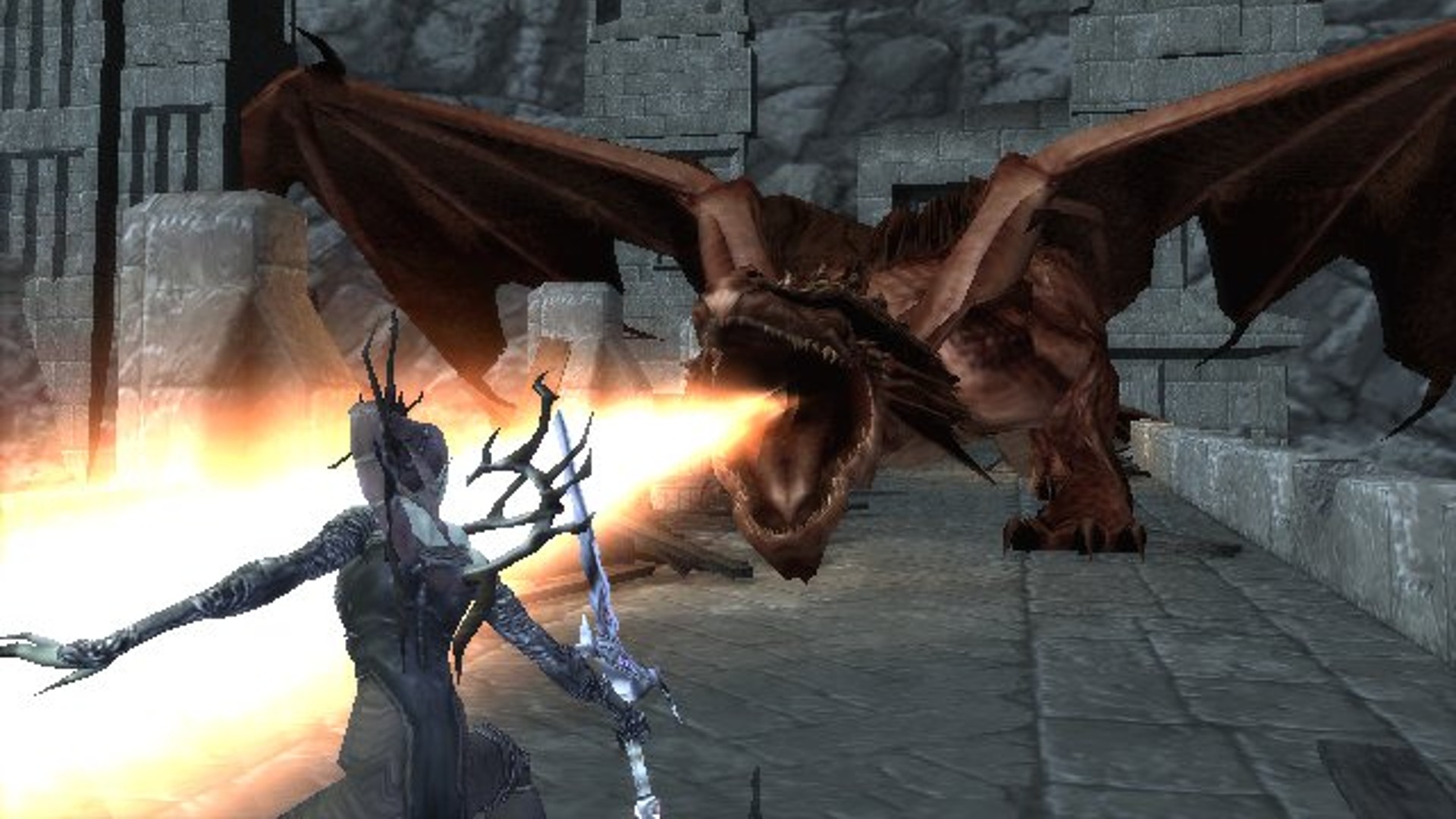Before Baldur's Gate 3, these games made D&D's Forgotten Realms a fixture on PlayStation
Play Magazine exhumes the best PlayStation games that incorporated one iconic D&D setting over the years

The Forgotten Realms is not just Dungeons & Dragons' most popular setting, but one that belongs to everybody. One where the story told by your dungeon master across a dining room table is every bit as valid as the one projected onto a cinema screen in Honor Among Thieves. It’s no surprise, then, that it's proved a perfect playground for video games - a medium where the storytelling is shared between you, the player, and the professional writers who've put together your dialogue options. From Baldur's Gate to Neverwinter, in RPGs and action games, developers have been sending us to the Realms for decades now. And in the absence of a passing bard, we're your guide to the very best of it.
Infinity and beyond


This feature originally appeared in Play Magazine. For more great features, interviews, and more delivered to your digital device or doorstep, subscribe to Play Magazine.
Baldur's Gate defined the shape of the Western RPG as we know it, setting the stage for Dragon Age: Inquisition and The Witcher 3 many years later. In fact, we're so familiar with its innovations today that it can be difficult to appreciate just how strange and experimental Bioware's pitch was back in 1998.
The prototype the studio brought to publisher Interplay was an unprecedented fusion of tabletop-style RPG stats and fast-moving isometric combat, the latter inspired by the rise of speedy strategy games like Command & Conquer. Feargus Urquhart – then a producer at Interplay's Black Isle division, later the head of Obsidian – took a chance. He pushed to grant Bioware the Dungeons & Dragons licence, and it proved an ideal pairing.
Characters flowed straight from the Canadian developer's tabletop sessions into Baldur’s Gate, providing the story with both its villains and memorable companions, such as the dunderheaded yet endearing barbarian Minsc. Bioware worked wonders with the Forgotten Realms setting, drawing from a series of tie-in novels to spin a dark yarn about mortals vying to take the seat of a dead god. Its depiction of the Sword Coast saw magic and prophecy collide with more grounded geopolitical concerns and iron shortages. At the same time, dire warnings in dialogue mingled with Pythonesque comedic interludes.
Somewhere in that juxtaposition, the Realms began to feel real. Baldur’s Gate was a hit, and its sequel shored up Bioware’s success. That game replaced the Sword Coast’s patchwork open world with a more curated collection of druidic forests, visiting circuses, and dragon dens. Its map was dense with chance meetings, terrifying battles and meaningful choices, and it’s still regarded as a high water mark for the RPG genre.
Winds howling

Bioware drew from a series of tie-in novels to spin a dark yarn about mortals vying to take the seat of a dark god.
In such glowing company, you might expect Black Isle’s spin-off series to lack luster. Icewind Dale was made with Bioware’s engine, but without the developer’s involvement, and took a less ambitious path through the Forgotten Realms, its developers opting for linear dungeon crawling rather than freeform overland adventuring. "Chris Parker laid it out pretty clearly," Obsidian design director Josh Sawyer recently told the Designer Notes podcast. "We are going to make this in 14 months. We are not going to have companions.'"
Back then, Sawyer was one of a handful of junior designers working on Icewind Dale – without the direction of a lead designer. It sounds like a project primed for disaster, but the narrow focus and deep D&D knowledge of Black Isle's staff saw it through. These dungeons weren’t simply dank caves, but stuffed with sights pulled from the Realms' bestiaries and lore books.
Weekly digests, tales from the communities you love, and more
One level of Sawyer's abandoned dwarven fortress, Dorn's Deep, was home to fire giants, salamanders, and pools of orange lava; another was a villa housing a master thief. A third took the player through a series of botanical domes occupied by a dark elf wizard. Meanwhile, umber hulks from the Underdark ploughed unexpectedly through the walls, like abyssal Kool-Aid Men. If the battles were sometimes too grueling, they were correspondingly rewarding for those who'd mastered the Infinity Engine’s ruleset over multiple games.
Alas, Icewind Dale II has never made it to PlayStation – but even in its absence, you can spend hundreds of hours revisiting the golden age of single-player Dungeons & Dragons on console as enhanced editions of Baldur's Gate, Baldur's Gate 2, and Icewind Dale came to PS4 in 2019.
Dungeon matters

There are two branches of Bioware's development that you can follow in the wake of Baldur's Gate. One leads to Knights Of The Old Republic, Dragon Age, and Mass Effect – the style of cinematic, story-driven blockbuster that made the studio a household name. The other ends firmly with Neverwinter Nights, the online RPG-slash-development-tool designed to capture the creative freedom of tabletop D&D (released as an enhanced edition for PS4 in 2019). You can consider it either an evolutionary full stop, or a starting point that has enabled countless community adventures ever since.
The making of Neverwinter Nights actually predates Baldur's Gate. This was a five-year commitment in an era when games typically came together in less than half that time. Its long gestation can be explained in part by its technical complexity. Not only was this Bioware's first 3D RPG, it was one that would connect players together for co-op and competitive encounters across the millennium-period internet.
Neverwinter Nights' toolset was taken up by fans, who created MMORPGs, fighting arenas, and sprawling sagas.
It would launch with a fully-featured campaign comparable in scope to Baldur's Gate that could be played solo or with friends. And every element of that campaign could be pulled apart and used as the building blocks for brand-new adventures, which could in turn be shared as tiny downloads online.
In the end, the Bioware-directed adventure starting in the titular city of Neverwinter didn't prove the equal of the studio's previous RPGs. But the toolset was taken up by fans, who created MMORPGs, fighting arenas, and sprawling sagas. Bioware did a marvellous job of spotlighting the best player inventions, even funding further community expansions with the backing of publisher Atari. Some of the finest Western RPGs of all time are still to be found within the walls of Neverwinter Nights.
For several years afterwards, Neverwinter Nights was Bioware's primary recruitment tool for new developers. And over in Poland, CD Projekt Red made its first ever game on the foundations of Bioware's engine; switch to isometric view in The Witcher's original PC release and you can clearly see the resemblance.
Forever Winter
Don’t mistake Neverwinter (released for PS4 in 2016) for a direct sequel. Made by City Of Heroes developer Cryptic Studios, it’s much closer to a traditional MMORPG, with the muddy graphics and confusing fights to match.
Yet it has its perks, including a guest questline – guestline? – written by celebrated Drizzt Do’Urden novelist RA Salvatore, and a history of expansions that keep up with changing events in D&D lore. If you want to be kept abreast of local news in the Forgotten Realms, Neverwinter is the game you ought to be playing. That said, the closest thing to a proper successor to Neverwinter Nights on PlayStation was Sword Coast Legends, released for PS4 in 2016, which replicated both Nights’ Forgotten Realms setting and its desire to empower players.
In its Dungeon Master mode, one player could resize dungeons, place chests, designate quest givers, hide secret rooms, and design monster encounters. Then, when adventurers entered their nest, the DM could steer and antagonise them in real time. Sadly, its story campaign failed to live up to the pedigree of Dragon Age: Origins game director Dan Tudge, and the multiplayer mode that once gave Sword Coast Legends its USP has shut down, its servers closed. As it stands, no new developer has stepped up to the daunting task of representing Dungeons & Dragons in its entirety on console. Most adaptations of the tabletop game settle for nailing either the lore or the ruleset, but leave out the shared storytelling that sits at the centre of the tabletop hobby.
Daggers out

There's an umber hulk in the room that we haven't been addressing. The vast majority of celebrated D&D games have been developed for PC and only belatedly ported to PlayStation. As such, they bear the hallmarks of their original platform: a slow pace; an isometric perspective; and an awful lot of tiny boxes filled with text and numbers.
While you can have a wonderful time with any of them on a telly screen, it's not wrong to want an adaptation that plays to the traditional strengths of PlayStation: speed; immediacy; and an undeniable sense of cinema. Game developers have been working towards that end for decades now, with mixed results.
There’s no clear and obvious way to turn dice rolls and character sheets into flowing action, but with Baldur’s Gate: Dark Alliance (PS2, 2001, re released 2021 for PS5 and PS4), Interplay happened upon a formula that clicked. Similarities to the other Baldur's Gate end with the backdrop. After arriving in the city of the title, you're sent into a cellar by Jennifer Hale to clear out the rats, before stumbling into the sewers to fight thieves, and the crypts to smash skeletons, and then through a portal to kill drow, and so on.
This momentum and simplicity made the original Dark Alliance a hit on its release – that and the fact that it made tactile use of the DualShock 2 via straightforward melee mechanics. Rarely have clay pots cracked open with such a satisfying crash. A dwindling Black Isle handled the sequel directly, with diminished results. And if you played Dungeons & Dragons: Daggerdale in 2012, only the PS3-era light pooled beneath the torch brackets hinted that a full decade had passed since Baldur’s Gate: Dark Alliance.
The formula remained untweaked, and when Diablo 3 arrived on consoles a couple of years later, there was no reason to return to any hack ‘n’ slash pretenders.
New alliance

Demon Stone filled the screen with clanging swords and marauding trolls in heightened siege scenarios.
When Dark Alliance was rebooted in 2021, the results were less reminiscent of its namesake than 2004's Demon Stone (PS2). Both games pulled heavily from the storytelling of RA Salvatore, slotting adventures in the gaps between the bestselling author's existing works, and enlisting the man himself as an advisor. For Demon Stone, Salvatore even wrote the script, plotting the scrapes of an unlikely trio of new characters – fighter Rannek, sorcerer Illius, and half-drow rogue Zhai - and weaving their stories into the novels he was writing at the time.
Demon Stone's other draw was its development talent, Stormfront Studios having put together a popular Two Towers adaptation in time for the release of Peter Jackson’s movie. While Rannek was no replacement for Aragorn, Demon Stone recreated much of the same drama in the Forgotten Realms setting, filling the screen with clanging swords and marauding trolls in heightened siege scenarios.
Today, 2021's Dark Alliance is your best bet for a followup to Demon Stone, and for a hands-on D&D spectacle of any kind. Rather than give Drizzt another fleeting cameo, Tuque Games stuck Salvatore’s drow hero front and center alongside his closest pals, and had them engage in close combat with gobby goblins beneath the mountains of Icewind Dale. Thanks to the modern business of blocking, dodging and parrying, Dark Alliance is a much deeper battler than its predecessors – and unlike in the RPGs, you get to run a sword through a verbeeg named Gutnir Widebelly yourself, rather than directing somebody else to do it.
This feature originally appeared in Play Magazine. For more great features, interviews, and more, subscribe to Play Magazine.
Jeremy is a freelance editor and writer with a decade’s experience across publications like GamesRadar, Rock Paper Shotgun, PC Gamer and Edge. He specialises in features and interviews, and gets a special kick out of meeting the word count exactly. He missed the golden age of magazines, so is making up for lost time while maintaining a healthy modern guilt over the paper waste. Jeremy was once told off by the director of Dishonored 2 for not having played Dishonored 2, an error he has since corrected.



